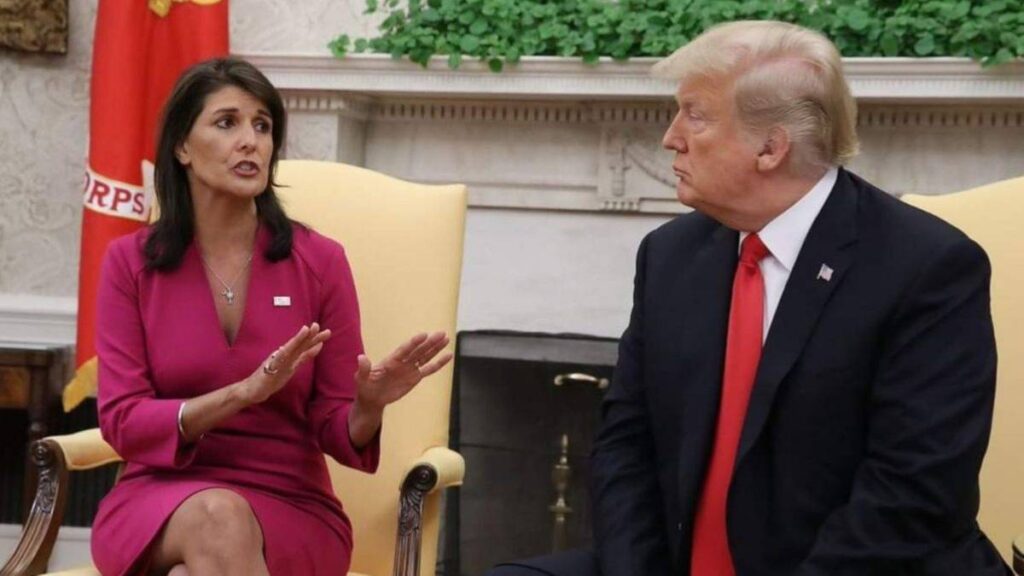
There was mild jubilation in the camp of former president Donald Trump as he triumphed at the February 8 Nevada caucuses. The billionaire businessman won the vote resoundingly as his top contender, Nikki Haley, was missing from the ballot. Nevada has a confusing system for selecting candidates. The Silver State runs both a primary and a caucus. Here’s why.
Just after the 2020 elections, Democrat lawmakers won their bid to move the state from a caucus system to primaries. Primaries are more accessible to voters than caucuses. Primaries could last for long hours and extend to more than a day.
They also give voters the flexibility to vote by mail. But caucuses are more strict. Caucus voters must show up at the venue at a specific time and date. Nevada state Republicans frowned at the move to shift the state to primaries.
Especially because they didn’t like the idea of voting by mail. They, therefore, devised a means to retain the primary system amongst themselves. So, in Nevada, some Republicans participate in the state-run primaries while others opt for the party-run caucuses. Voters can participate in both, but the same doesn’t apply to candidates.
Also Read: Nikki Haley Blasts Trump for Trying to Blow Up Congressional Border Deal
Nikki Haley opted for the primaries, while Donald Trump ran in the caucuses. Republican party officials have called the state-run primaries an “all-new, very expensive, and meaningless process.”
That’s because the primaries do not impact who gets the Republican presidential nomination. The caucuses are where all the party’s 26 delegates are up for grabs, and Donald Trump took the opportunity.
On a regular day, both candidates would have split the delegates based on their percentage performances. But a primary win for Haley would provide no delegates. But even at that, Haley didn’t win.
POLL — Should Donald J. Trump Be Allowed to Run for Office?
Haley squared up against a couple of unpopular candidates in the primary. But she lost to another primary option called “none of these candidates.” The “none of these candidates” option on the ballot was designed to ensure participation even when none of the contestants were appealing.
Haley received about 23,000 votes, while the “none of these candidates” option garnered 47,000 votes. These 47,000 votes included many of Trump’s supporters who wanted to give Haley a piece of their mind. Prominent in this number is Nevada Gov. Joe Lombardo, who declared his support for the “none of these candidates” option.
Also Read: Anxiety Brews in Trump’s Camp Over Montana’s GOP Primary
Trump’s win at the caucus has almost doubled his delegates haul to almost 60. Haley’s total remains at 17. Haley didn’t campaign in Nevada because she believed the caucus system was created to favor Trump.
Trump also won at the Virgin Islands caucuses on February 8. He clinched all four delegates in the state even though Haley had campaigned in the state.
Haley’s eyes are, however, fixed on the South Carolina primary homecoming on February 24. She was the state governor from 2011 to 2017 and hopes to gain a massive leap against Trump on her home soil. A failure to do so could end her presidential campaign. But a potential Donald Trump disqualification is a good reason for Haley to see the fight to its finish.
You Might Also Like:
Fontana Firefighters Rescue Woman From 25-Foot-Deep Hole in Septic Tank
Sheriff Describes Florida Bank Hostage Scene as “Chaotic” After SWAT Killed Suspect
Woman Discovers Husband’s Hidden Secret From 50 Years Ago After Cleaning Painting
NORAD Detects Russian Aircraft in US Airspace
Taylor Swift Continues Record-Breaking Sold-Out Tour in Tokyo
